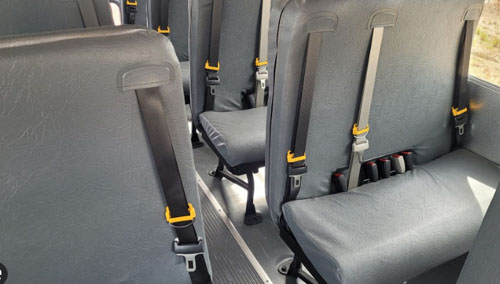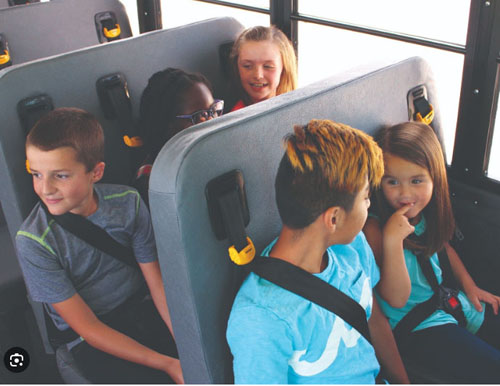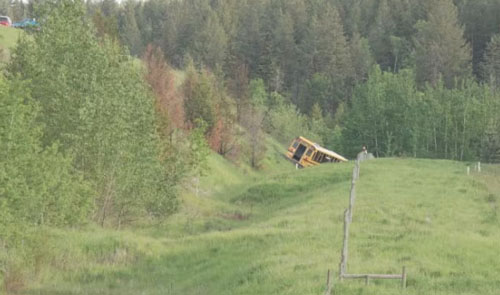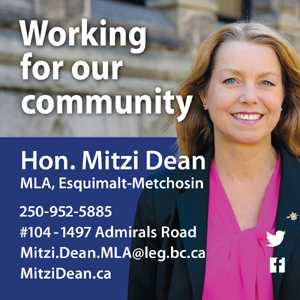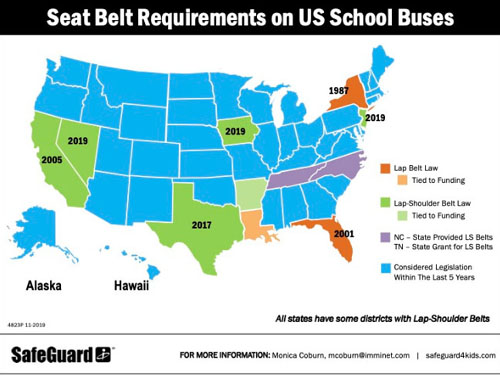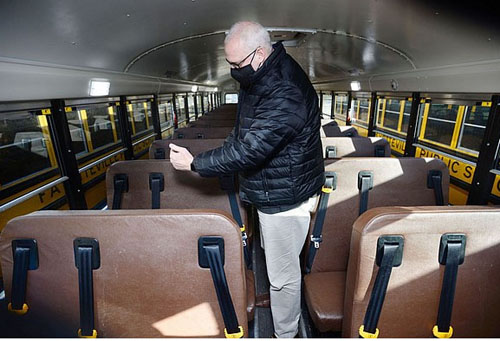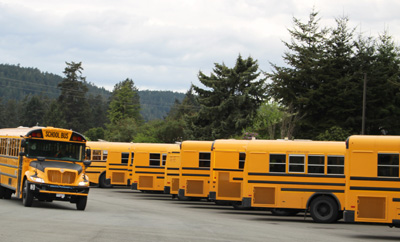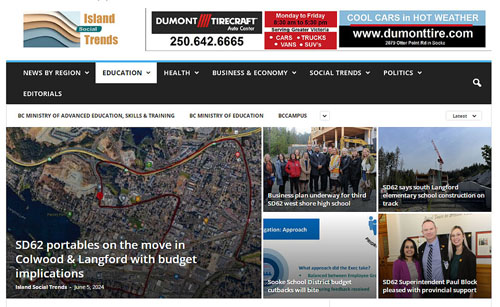Wednesday June 26, 2024 | VICTORIA, BC [Updated June 27, 2024]
Political analysis by Mary P Brooke | Island Social Trends
School buses in BC are not equipped with seat belts.
The debate is not new about whether or not to provide seat belts in school buses. The safety of children during transportation would seem a natural concern and service delivery of school districts and their governing jurisdictions.
But discussion and progress is sporadic at best, with back-and-forth between school districts, provinces and the federal transportation ministry. Cost and liability seem to be two key factors for consistent delays in seeing seatbelts used on school buses.
The shift in industry conversations may now be focusing on not just preventing fatalities, but also injuries, even in minor crashes.
While school buses may operate fairly reliably and safely within urban routes, school buses take students on field trips, school activities, and sporting events that go beyond quiet neighborhood streets onto busy highways.
Refresh due to recent school bus incident:
Given the very sad school bus crash incident last week on Highway 97 near 100 Mile House (126 km northwest of Kamloops), the use of seat belts on school buses has seen renewed discussion. The June 21 incident saw 36 people injured (essentially all the Grade 6 and 7 children on the bus) and one person died (in a separate collision shortly afterward). [See CBC news coverage of the accident]
One student and the bus driver had to be extricated by first responders while most of the 40 students and teachers were able to get out on their own, according to local fire Chief Roger Hollander. But 17 persons were transported to hospital.
The local School District 27 (Cariboo-Chilton) issued a statement expressing gratitude to their staff, first responders and passers-by who provided assistance at the scene of the bus crash. “While we are relieved as a school community to know the injuries sustained by our students and staff were not in the magnitude we feared,” said SD27 Superintendent Chris A. van der Mark.
// UPDATE AT JUNE 27: All the students and staff who were on the bus on June 21 were discharged from hospital by June 24 or 25, says SD27 Superintendent Mark Van Der Mark. Injuries included some broken bones and a range of concussion, said Van Der Mark in a phone interview with Island Social Trends today. He says the field trip was an annual one at school year-end, for kids to go canoeing and fishing at Gavin Lake for just a fun day. The reason for why the bus went off the road is still under investigation, the Superintendent says. Van Der Mark has been the SD27 Superintendent (over seeing about 4,600 students) for now about five years. The two schools from which the Grade 6 and 7 students went on the field trip have a combined student population of about 500. He’s had “nothing like this” incident under his watch, though there have been buses off the road in bad weather or in soft-shoulder conditions. The SD27 school bus fleet does not have seat belts and the SD27 board has not had discussions about that, preferring by default to the national Transport Canada regulations. He refers to school buses as “tanks on wheels” as in being well-equipped to keep passengers safe. Overall, people in the impacted families, classrooms and towns are relieved, says Van Der Mark. The schools did not close down; there was a prep session on Sunday June 23 and then the impacted schools (100 Mile and Horse Lake) were back in action on Monday. //
Premier’s response:
When asked by media on June 24 about the use of seat belts on school buses, Premier David Eby offered the usual defence that the regulations are set by Transport Canada but added the province might look into it further.
“It is strange that there are no seat belts on (school) buses,” said Eby on June 24. He said would see if there can be some provincial standards in BC.
Bus engineering:
According to the Canada Safety Council, school buses are not passenger vehicles. “They are built to rely on passive safety, not on seat belts, and are designed and constructed differently from passenger cars. They are bigger, heavier, and sit higher off the ground.”
Combination lap and shoulder belts would require stiffer seats, which could increase injury to students who are not buckled up. “The driver cannot ensure that every child has their seat belt on; some buses can carry up to 70 children. Moreover, the shoulder belts can lead to abdominal injuries because of “submarining” – when children slip down, risking injuries to organs covered by the lap belts,” states the Canada Safety Council on their webpage.
“Beyond certain engineering problems, someone would need to ensure the seat belts are used, adjusted properly between uses by smaller children and larger children and repaired when damaged,” says the Canada Safety Council in their analysis. “In an emergency, seatbelts could hinder evacuation.”
The Canada Safety Council further makes an interesting statement that “young children should not be placed in a situation where they are responsible for their safety”. They also claim that:
- It is more common for injuries to be sustained once outside the bus, including being hit by their own school bus or other vehicles.
- Children who walk to school or use other forms of transportation are exposed to higher risk than travelling on the school bus.
An organization in Alberta called The Bus Centre very recently (March 22, 2024) published a page about School Buses and Seatbelts. Among other things, they state that “the effectiveness of a seatbelt is dependent on it being worn properly”, adding this: “When seatbelts are not worn properly, they can actually have adverse effects in the event of an accident. The use of lap belts alone was discontinued as research has shown they can increase the risk of serious head and neck injuries. However, even 3-point seatbelts can cause injuries i.e. abdominal injuries if the child slips down (submarines) below proper lap belt placement.”
BC has taken part in a federal pilot project:
In following up with the Ministry of Transportation and Infrastructure this week, Island Social Trends received this statement:
- Safety is our top priority. Safety on school buses is regulated by Transport Canada.
- The Canada-wide Task Force Report on School Bus Safety report released in 2020 recommended safety features to improve safety of children outside the bus (e.g. extended stop arms), where data demonstrates the greatest risks exist. The report did not recommend use of safety belts, instead highlighting the need for further research.
- In September 2020, the federal and B.C. governments jointly announced the start of a pilot project involving the use of three-point safety belts in school buses in two school districts in British Columbia – School District #68 (Nanaimo-Ladysmith) and School District #78 (Fraser-Cascade). A similar pilot was also undertaken in Sudbury, Ontario. The pilots have tested operational considerations relative to seatbelt use, such as proper seatbelt adjustment and children moving around in their seats or unbuckling. The participating school districts have provided pilot data to Transport Canada.
- We look forward to continuing to engage with Transport Canada as they consider future regulatory amendments to improve school bus safety.
Of course children can perhaps not be relied upon to put on seat belts and keep them on. If it were the driver’s responsibility to check all student passengers being in seat belts before departing from a stop position, that would add a significant amount of time to bus route activity. A pre-motion check would also not guarantee that seat belt use remains intact after first-check.
Organizations like SafeGuard4Kids.org (in the USA) says ‘no more excuses‘. Their website claims that the problem is misinformation among school districts.
Parent input:
According to the American School Bus Council, more than 80% percent of parents said they want lap-shoulder belts on school buses.
BCSTA input:
The BC School Trustees Association (BCSTA) back in 2019 issued a letter to then Minister of Education Rob Fleming (who is now the Minister of Transportation and Infrastructure) asking for full funding to support the Transport Canada directions for changes to school bus safety “so that school districts can fully comply with the requirements”, with seat belts on school buses being the priority.
“Local boards may not be financially equipped to take on such significant spending,” BCSTA stated in their July 11, 2019 letter signed by then-BCSTA President Stephanie Higginson (who is now running as a BC NDP candidate in Ladysmith-Oceanside).
School seat belt laws in the USA:
In 2019, School Transportation News in the USA presented a map by SafeGuard4Kids showing which states have brought school bus seat belt use into law. Some states tie the requirement to funding, with other states just pay outright or provide grants. Where laws are not already in place, it seems that every state considered legislation about school bus seat belts in the five year period 2014-2019.
Federal lead is happening in Canada:
It seems that Transport Canada is in fact trying to move the needle on this issue.
And if discussions at a local level here on Vancouver Island (Sooke School District 62) are any indication, it seems that cost is a factor — starting with equipping current buses with seat belts (or buying new ones with seat belts already installed), and then the insurance costs, driver training, perhaps hiring additional staff to do seat belt checks, and probably more driver time to be paid (if route times become extended).
“School buses must meet a unique set of safety requirements that other vehicle types are not required to meet,” said a Transport Canada spokesperson in an email to Island Social Trends this week.
“This includes school bus structural strength requirements, emergency exit requirements and unique occupant protection requirements. School bus seats are designed to have high backs and are spaced close together to protect children in accidents by ‘compartmentalization’. This occupant protection design has proven to be highly effective, however, even with this strong safety record, there are opportunities to make school buses even safer,” the Transport Canada spokesperson said.
“In July 2018, Transport Canada published a regulation for the optional installation of three-point seatbelts on school buses should provincial and territorial governments decide to pursue this option,” says Transport Canada.
“This regulation ensures that seatbelts that are installed on school buses are appropriately designed for use by children who range in size from kindergarteners to high schoolers,” says Transport Canada. The amendment including the regulatory impact analysis can be found online.
Task force & pilot project:
As stated by Transport Canada, in January 2019, the Council of Ministers Responsible for Transportation and Highway Safety established a Task Force on School Bus Safety, comprised of federal, provincial and territorial officials and a diverse stakeholder community (e.g. fleet operators, safety groups, manufacturers, school boards, driver unions) to assess the feasibility of enhancing school bus safety, including the possibility and implications of mandating seatbelts on school buses.
On February 14, 2020, the Council of Ministers Responsible for Transportation and Highway Safety approved the release of the Task Force’s final report, Strengthening School Bus Safety in Canada, recommending the pursuit of key safety technologies aimed at increasing the safety of children travelling by school bus.
At the same time, the Council of Ministers also agreed to launch pilot projects to assess the viability of seatbelts on school buses in Canada. The pilot projects, which operated in British Columbia and in Ontario, concluded in 2023. The final report capturing their results is being compiled with the aim to help inform decision-making about whether to mandate seatbelts on school buses in Canada.
Local school district:
Island Social Trends has inquired with Sooke School District 62 (SD62) here on the west shore of South Vancouver Island as to what their board or executive have been deliberating regarding seat belts on school buses, with a reply expected next week.
There were some debate at the SD62 board level in previous years. Financial cost (of new or upgraded buses) and insurance were components of the discussion.
===== RELATED:
NEWS SECTIONS: K-12 PUBLIC EDUCATION | SOOKE SCHOOL DISTRICT 62 | EDITORIALS
===== ABOUT THE WRITER:
Mary P Brooke is the editor of Island Social Trends, a publication she launched in 2020 to explore the socioeconomic and political dynamics of the south Vancouver Island region, BC politics, and national issues.
Island Social Trends publishes daily at IslandSocialTrends.ca and bi-weekly in print. Premium Subscribers may purchase the PDF version of the print edition, which is delivered by email.
During 2014-2022 Ms Brooke covered the news of Sooke School District 62 at the board and committee level, and now covers BC public education more broadly, reporting alongside the BC Legislative Press Gallery.


